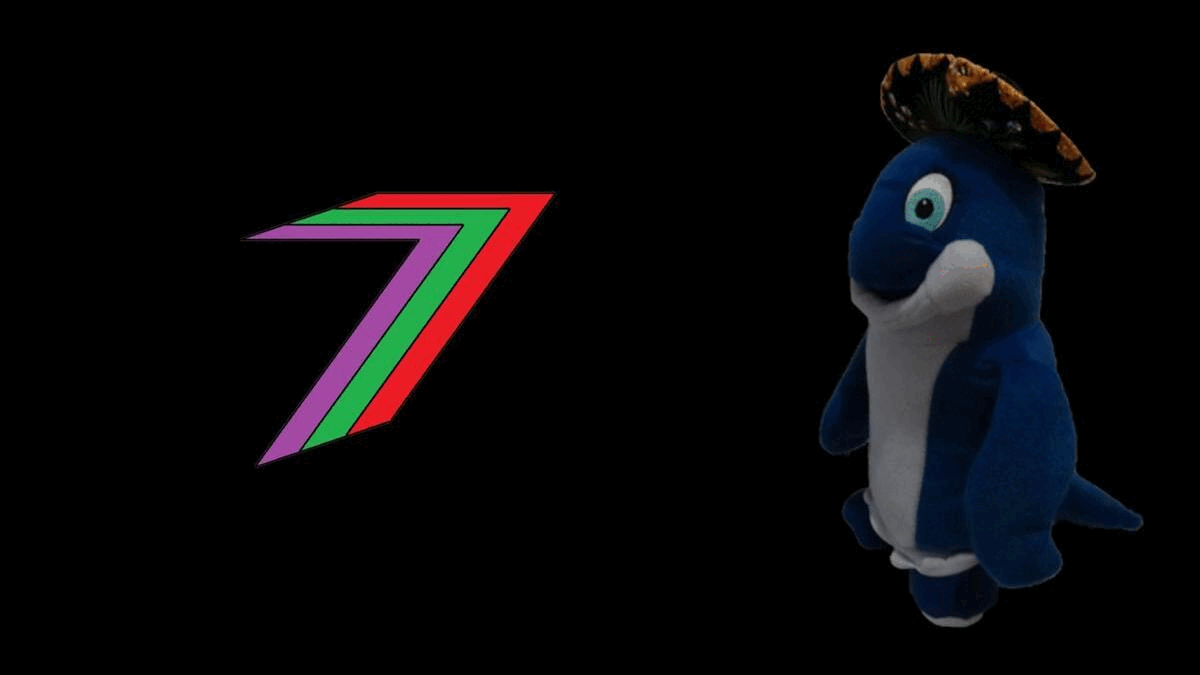Hi Everyone,
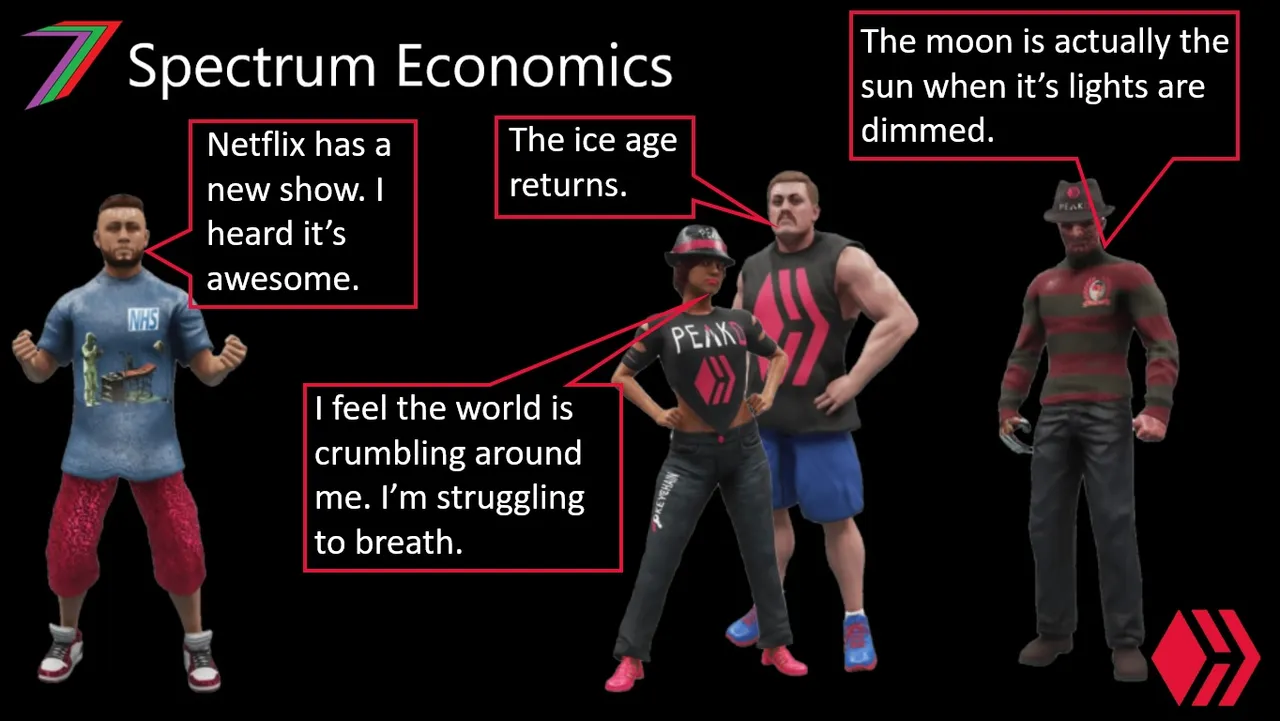
Over the past few years, there has been an extraordinary amount of misinformation forced upon the public. It has come from most mainstream media, politicians, and even experts and professionals. Social media platforms have reinforced the messaging using their algorithms. They partially censor through shadow banning and fully censor by removing posts and shutting down accounts. To obtain a clearer more balanced picture of events requires some searching. This can be difficult and time consuming. Alternative information can be misleading or inaccurate. There are plenty of “conspiracy theories”, some have some substance to them, others are completely false, and others are mixture of half-truths. Most of them are difficult to prove as real or fake.
In a world flooded with misinformation, disinformation, incomplete information, half-truths, and speculation, people need time to determine what they believe to be true. Time is not something everybody is willing to spare. Therefore, the easiest resources are relied upon. In most cases, this will be mainstream media and trusted accounts on major social media platforms. In this post, I discuss how time constraints as well as the stress of everyday life affects how people absorb and analyse information. This post will be focusing on US examples due to availability of data.
Too Occupied

People are kept busy with many activities that they consider an essential part of their day or week. Such activities could include:
- Facilitating the earning of money such as working and travelling to the workplace.
- Keeping their household in order such as household chores, cooking, grocery shopping, and looking after children.
- Self-care such as resting, sleeping, bathing, and eating.
- Acquiring skills through training, studying, and schooling.
Neglecting these types of activities can result in serious consequences such as financial difficulty, poor health, damage to relationships, etc. Therefore, people are compelled to do them. Once time has been dedicated to these activities, we could argue that people have some flexibility around the usage of their remaining time.
According to Inc., people in the US have an average of 5 to 6 hours of free time a day. A lot of things can be done in 5 hours. However, people choose to spend more than of half this time looking at screen devices such as televisions, computers, smart phones, etc... Most of the remainder of that time is used for other leisure purposes and exercise (Inc.).
People’s free time is a commodity businesses compete to obtain. They want and crave people’s attention so that they can obtain people’s money. Devices such as computers and smartphones have become a work, entertainment, and social necessity for both adults and children. People choose to pay to use some channels, websites and services; hence, generating revenue for the providers. For websites and channels that do not require a user fee, businesses profit from advertising. The advertising encourages people to buy things. Therefore, on average, it is profitable for business. If it was not, they would not do it.
According to Newscase, in 2022, the average person spends 6 hours a day on social media. They profit from people’s working hours as well as their free time. The users provide the content that attracts other users. Hence, the users are both the customers and the products. The social media platform hosts the content and offers features that encourages people to engage with each other as much as possible.
The amount of time people spend creating, sharing, watching, reading, and observing content indicates that businesses are doing a very good job at capturing people’s attention. If we combine this with the time dedicated to tasks deemed as a necessary part of living, people are left very little time to contemplate and question the information they receive. They might only have time to flick through a few alternative news networks, websites or newspapers, which are most likely peddling the same information. These news networks might be deemed credible because they are established. Many of them have been running or publishing for decades. Therefore, people do not feel the need to question them too deeply.
Too Stressed
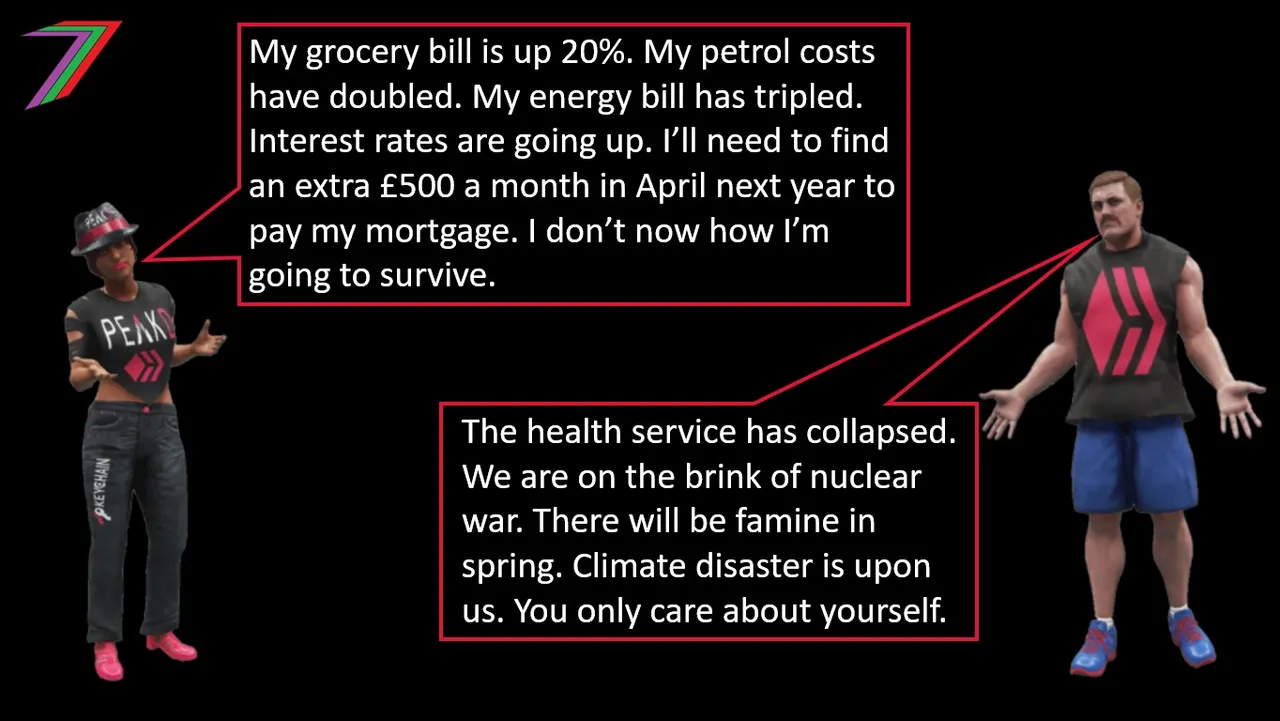
Most people suffer from some form of negative stress. According to the Recovery Clinic, about 77% of people experience stress that affects their physical health and about 73% of people have stress that impacts their mental health. The areas, in 2022, that are causing people the most stress are rising prices of everyday items (87%), supply chain issues (81%), global uncertainty (81%), Russia’s invasion of Ukraine (80%), and potential retaliation from Russia (80%)(The America Institute of Stress). These sources of stress are mostly new and are adding to existing sources of stress. According to the American Psychological Asscociation, based on data provided prior to 2011, the most common sources of stress were:
- Money
- Work
- The economy
- Family responsibilities
- Relationships
- Personal health issues
- Housing costs
- Job stability
- Family health problems
- Personal safety
There is also the stress caused by the Covid-19 fiasco. Approximately 2 in 3 adults experienced increased stress during that period (The America Institute of Stress).
Negative stress affects people’s physical and mental health. According to The America Institute of Stress, stress can negatively affect our body systems (nervous, musculoskeletal, respiratory, cardiovascular, endocrine, gastrointestinal, and reproductive). The most common symptoms of stress are irritability, fatigue, lack of motivation, anxiety, headache, and depression (American Psychological Asscociation). All of the above hinders people’s ability to process information. Thus, likely limiting their ability to challenge information effectively.
People focus on the things that mean the most to them. People become stressed about things that they believe have a significant impact on their life. Therefore, people will dedicate more thought, time and energy to these things. For example they might:
- try to solve or reduce the cause of their stress
- react angrily to it and possibly anyone they believe associated with it
- become obsessed with it
Regardless of how they react to stress and the perceived source of it, they will become less bothered about other things. Especially if paying attention to these other things does not offer the potential to improve their current situation.
Conspiracy Theory
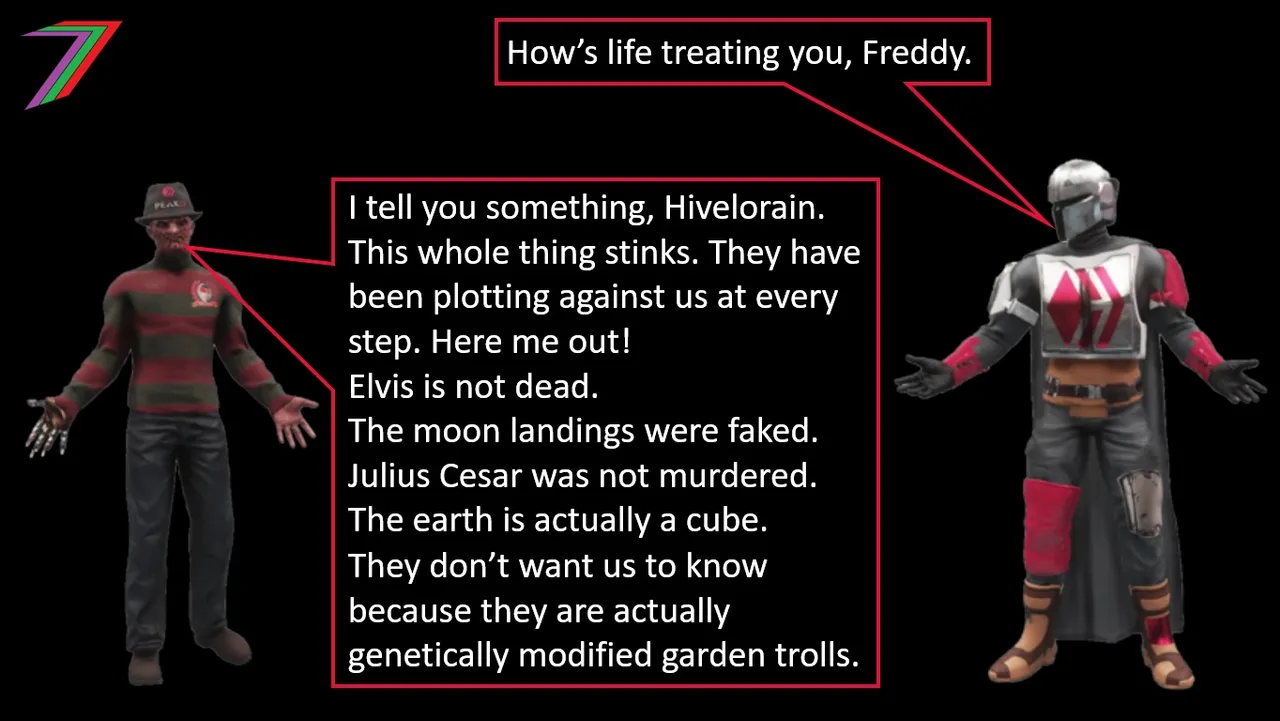
Even if people are too occupied or too stressed to investigate information circulating by the mainstream media. They could become suspicious of it and the people presenting it. Since 1997, US citizens’ trust in mainstream media has been gradually falling. In 2021, people’s trust in media fell to the second lowest during this period. See Figure 1.
Figure 1: Trust in Media
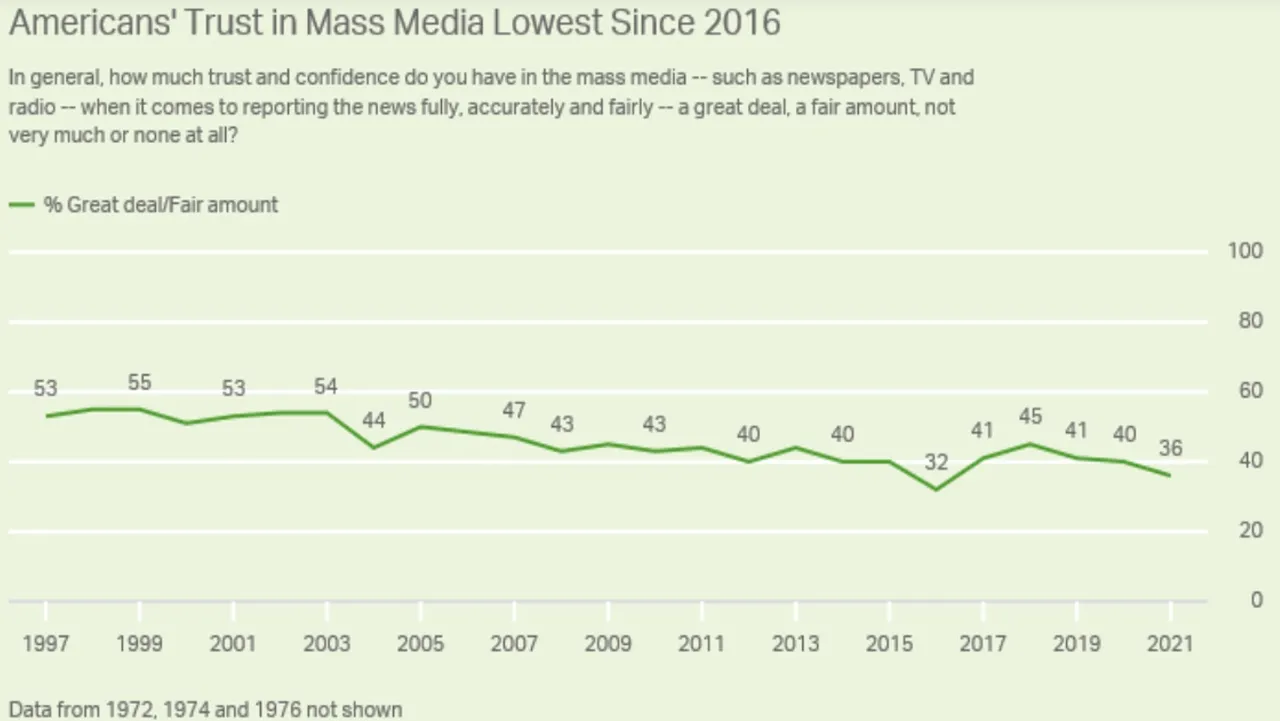
Source: Gallup
Trust in Government has consistently been trending downwards since the 1960s. The Watergate scandal in the early 1970’s and the terrorist attack on the Twin Towers in New York in 2001 lead to steep drops in confidence. Recent events around Covid-19 and the 2020 US Presidential Election scandal has contributed to keeping the trust in Government low. See Figure 2.
Figure 2: Trust in US Governments
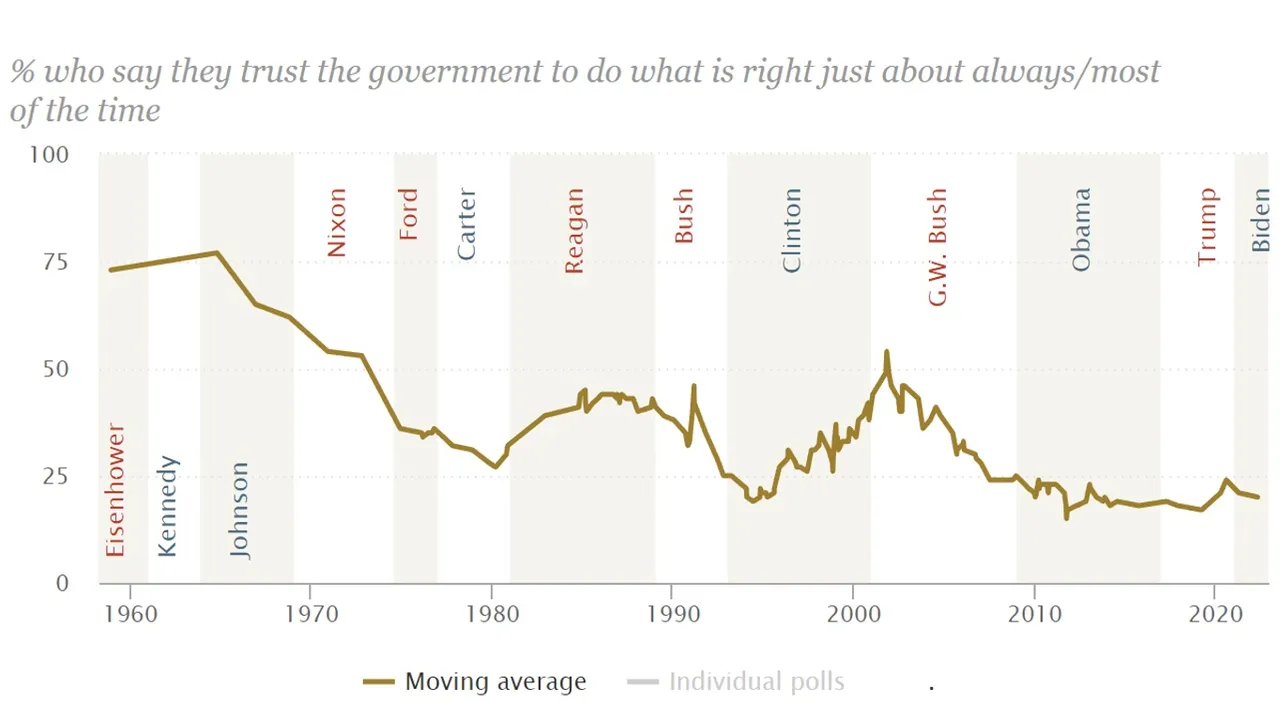
Source: Pew Research
Lack of trust in both mainstream media and Government has pushed people towards alternative sources of information. People are often attracted to conspiracy theory websites and channels. Some conspiracy theorists have good intent and genuinely aim to expose the actions of Government and other elements of the Establishment. They often draw conclusions based on circumstantial evidence and have on occasions been proven to be correct; thus, giving them some credibility. Other conspiracy theorists feed on people’s distrust for mainstream media and Government. They attempt to explain almost all actions by Government and other powerful groups as nefarious plots against the people. Some of their outlandish claims and predictions have been used by mainstream media as an attempt to discredit conspiracy theorists in general.
Some conspiracy theorists act as controlled opposition. They present both accurate and inaccurate information. The accurate information is used to gain credibility and the inaccurate information is used to mislead. This is done to guide attention towards promoting certain objectives or people as well as a way of distracting from the truth. For example, Donald Trump and the alternative media that supported him played the role of controlled opposition. They were very effective. Donald Trump won the 2016 Presidential Election. Many good intentioned conspiracy theorists were deceived by his campaign.
Not all alternative sources of information are based on conspiracy theories. There are plenty of websites and channels that engage in thorough research. They conduct genuine investigative journalism. They support their claims with both circumstantial and direct evidence. They are focused on uncovering the truth rather than following scripts (mainstream media) or attempting to draw conclusions from ambiguous evidence (some conspiracy theory websites). The mainstream media tend to describe any alternative sources that contradict their main narrative or even question the information they present as conspiracy theorists. They compare them with sources that produce the most unreliable information. They describe them as dangerous and claim they aim to radicalise people. This often leads to censorship, which makes finding and assessing information more difficult.
Alternative media offers both useful and accurate information as well as inaccurate and false information. It take time to explore and investigate it. Eventually, it will become clear which sources are genuine alternative media. They can be relied upon without as much investigation. Conspiracy theory websites and channels are not useless. Some of them provide valuable information and insight. However, extracting value from the information they provide requires additional research and analysis. This is likely to be too time consuming for most people.
Conclusion
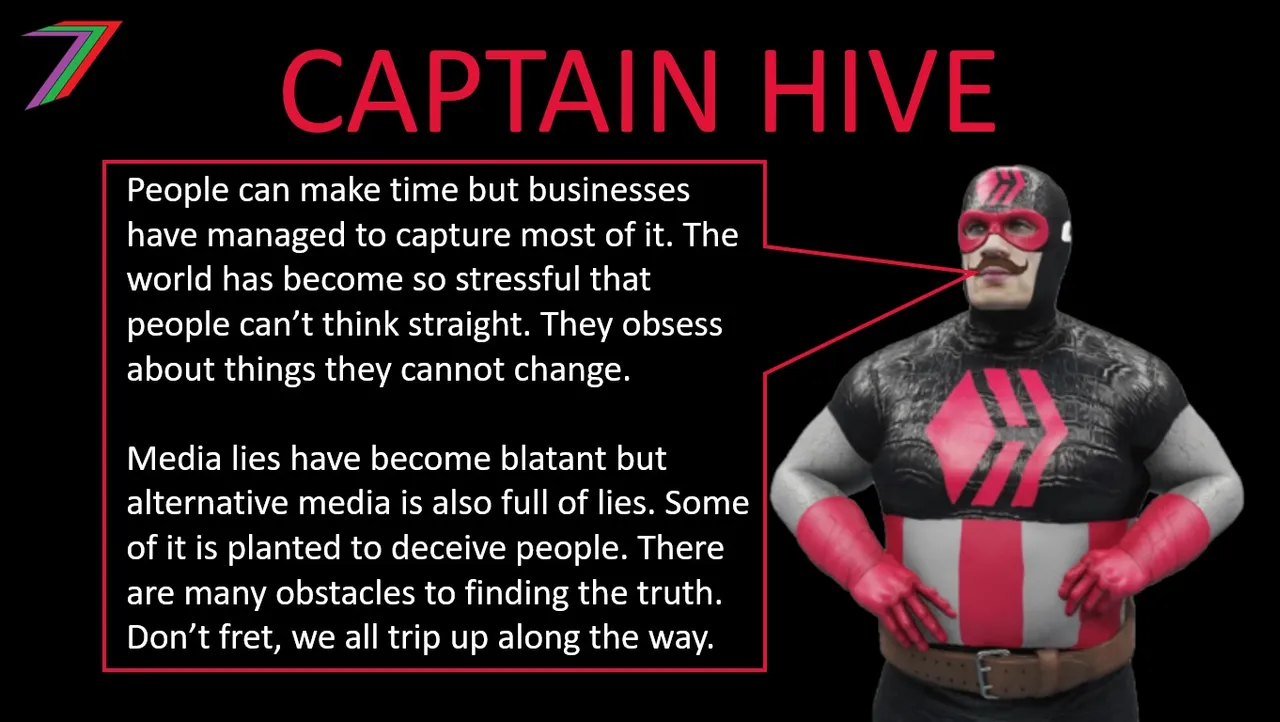
Many people have long working hours and numerous other responsibilities that consumes their time. However, most people, on average, have as much as 5 hours a day that can be considered free time. Much of this free time is cleverly extracted by businesses vying for attention. After this time is consumed people have little time to think about and explore the information they are presented by the mainstream media. To add to this problem, people’s lives have become stressful. Stress affects people’s behaviour and ability to consume information. It also affects people’s priorities, the perceived cause of stress becomes people’s focus of attention. This leaves less time and desire to pursue other activities of a lower priority.
Despite all the distractions, people’s trust in mainstream media and Government is low and continues to fall. They desire alternative information. Unfortunately, alternative information is a mixture of reliable and unreliable information. Without further investigation, it can be difficult to distinguish between what is true and what is false. Censorship by social media companies and Government exacerbates the problem, as false information remains unchallenged for longer.
More posts

If you want to read any of my other posts, you can click on the links below. These links will lead you to posts containing my collection of works. These 'Collection of Works' posts have been updated to contain links to the Hive versions of my posts.
Hive: Future of Social Media
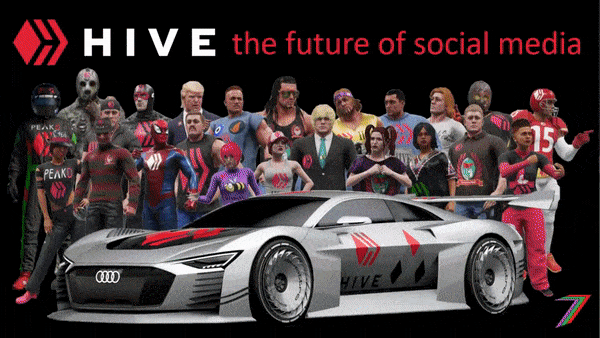
Spectrumecons on the Hive blockchain
